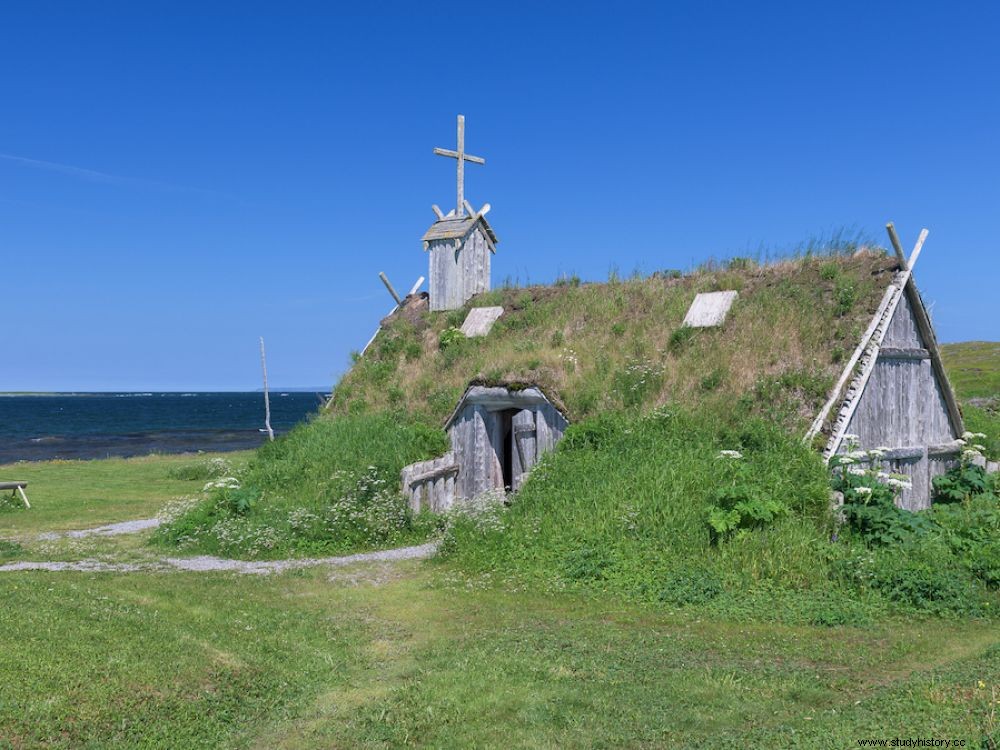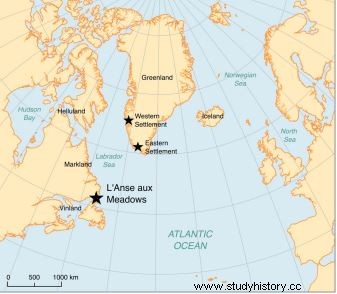Obtaining a new dating has just determined when the earliest European presence dates back to the American continent, five centuries before Christopher Columbus.

Studied for several years by the Norwegian explorer Helge Instad (1899-2001) and his wife, the archaeologist Anne Stine-Insgstad, a small set of buildings identical to those occupied by the Vikings in Iceland and Greenland has been unearthed. at Anse-aux-Meadows (Newfoundland). The foundations of six dwellings and the remains of a forge, with plenty of slag proving that iron had been made, were unearthed there.
Scientists assure it:in 1021, the first European settlers were already in North America. Since 1960, the date of the discovery of the Canadian site of Anse-aux-Meadow, at the northern end of Newfoundland, various studies have indeed come to confirm the evidence of an ancient Viking settlement in America, and this several centuries before the Genoese navigator Christopher Columbus landed in the West Indies on October 12, 1492. This was also described in the sagas*, these stories and legends developed in medieval Iceland of the XI th and XII th centuries. But when exactly did the ocean-going vessels of these Scandinavian sailors reach American shores?
The study of tree rings has spoken
If most specialists agree on an anteriority of at least 500 years for the arrival of these Viking groups, the tangible moment of this event was always debated. But it could be that a year has now been fixed. According to an article published on October 20 in the journal Nature, an international team led by Michael W. Dee of the University of Groningen (Netherlands) claims to have been able to establish in 1021 the installation of these first Viking colonies in Newfoundland. So there are just 1000 years.
 North Atlantic regions explored by Scandinavians. The Anse-aux-Meadows site is located on the northern peninsula of Newfoundland. The map shows the major settlements in Greenland where the Norse started, and the regions they named Helluland, Markland and Vinland. © R. Klaarenbeek
North Atlantic regions explored by Scandinavians. The Anse-aux-Meadows site is located on the northern peninsula of Newfoundland. The map shows the major settlements in Greenland where the Norse started, and the regions they named Helluland, Markland and Vinland. © R. Klaarenbeek
To achieve these results, the researchers would have relied on dendrochronological analyzes [study of the growth rings of trees]. Those of three pieces of wood, from three different trees, recovered in archaeological contexts attributed to these Viking populations of Newfoundland. After having demonstrated that these plant elements had been cut cleanly using metal blades – materials not produced by the indigenous peoples of the time – it is the examination of the tree rings (each ring corresponding to a year) which led to the setting of the year 1021 for their cut. A dating made possible thanks to the traces left on the three samples studied by a solar storm in 993 which would have produced a high peak of radiocarbon, the "signature" of which has been found in trees around the world. To know the moment of the cut, it was then enough to count the rings separating this signal from the bark of the wood, i.e. 29 rings.
According to the authors of the publication, this date would be the first scientifically attested of a first transatlantic contact prior to the crossing of Columbus. The previous dating attempt made in 2019 by another team was only able to offer a time range between 1100 and 1200 CE.
* The sagas are mythological stories from medieval Scandinavian literature. The most famous concerning America are those evoked in a description of Adam of Bremen "Gesta Hammaburgensis Ecclesiae Pontificum", in 1075, as well as in the saga of the "Islendingabok", by Ari Thorgilsson.
